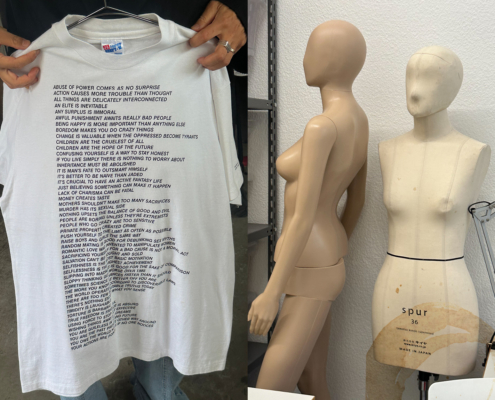2025 is the year of Nosferatu-core. Or Nosferescu-core, as my archivists like to call it. Forget sexy, bloody Dracula in a velvet cape. We’re talking real vampires—the ones who look like they’ve lived too long and haven’t eaten in a long time, who wear decay like a status symbol, who carry the weight of time in their silhouettes. This is not Edward Cullen. This is the real deal.
Robert Eggers’ Nosferatu (2024) is not just a horror film. It’s a visual manifesto, a world so obsessively built that even the tiniest details in the costuming tell a story. And Linda Muir? She ate. Muir has worked with Eggers before (The Witch, The Lighthouse), so we already knew she was a stickler for historical accuracy. But in Nosferatu, she goes beyond just getting the period right. She uses clothing as a language, every detail whispering something about class, survival, power. My favorite example? The corset of Ellen Hutter, played by Lily-Rose Depp. In 1830s Germany, wealthy women didn’t dress themselves—someone else did it for them. That’s why their corsets were laced in the back. But Ellen? She wears a front-lacing corset, something she can tie herself. That one detail? It tells you everything. She’s not rich. She’s independent. She’s probably struggling. It’s such a quiet way to communicate class, autonomy, and survival. When costuming is this good, you don’t need dialogue, the clothes are already speaking.
And everything in this film feels lived in. Muir refused to take shortcuts—no modern fastenings, no off-the-rack period costumes, no lazy styling. Every piece was built from scratch, using historically accurate techniques. That’s why the whole film feels so immersive—because it’s grounded in the reality of its time. The more believable the world, the scarier the horror.
 https://www.nastymagazine.com/wp-content/uploads/2024/09/the-human-cost-of-fashion-week5.jpg
1150
1500
Editor Nasty
https://www.nastymagazine.com/wp-content/uploads/2015/02/new-logo-basker-WHITE4.png
Editor Nasty2024-09-19 11:27:062024-09-19 11:27:49The Human Cost of Fashion Week
https://www.nastymagazine.com/wp-content/uploads/2024/09/the-human-cost-of-fashion-week5.jpg
1150
1500
Editor Nasty
https://www.nastymagazine.com/wp-content/uploads/2015/02/new-logo-basker-WHITE4.png
Editor Nasty2024-09-19 11:27:062024-09-19 11:27:49The Human Cost of Fashion Week







